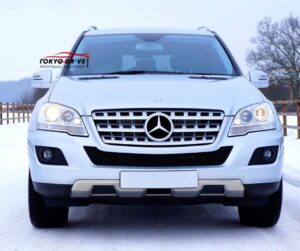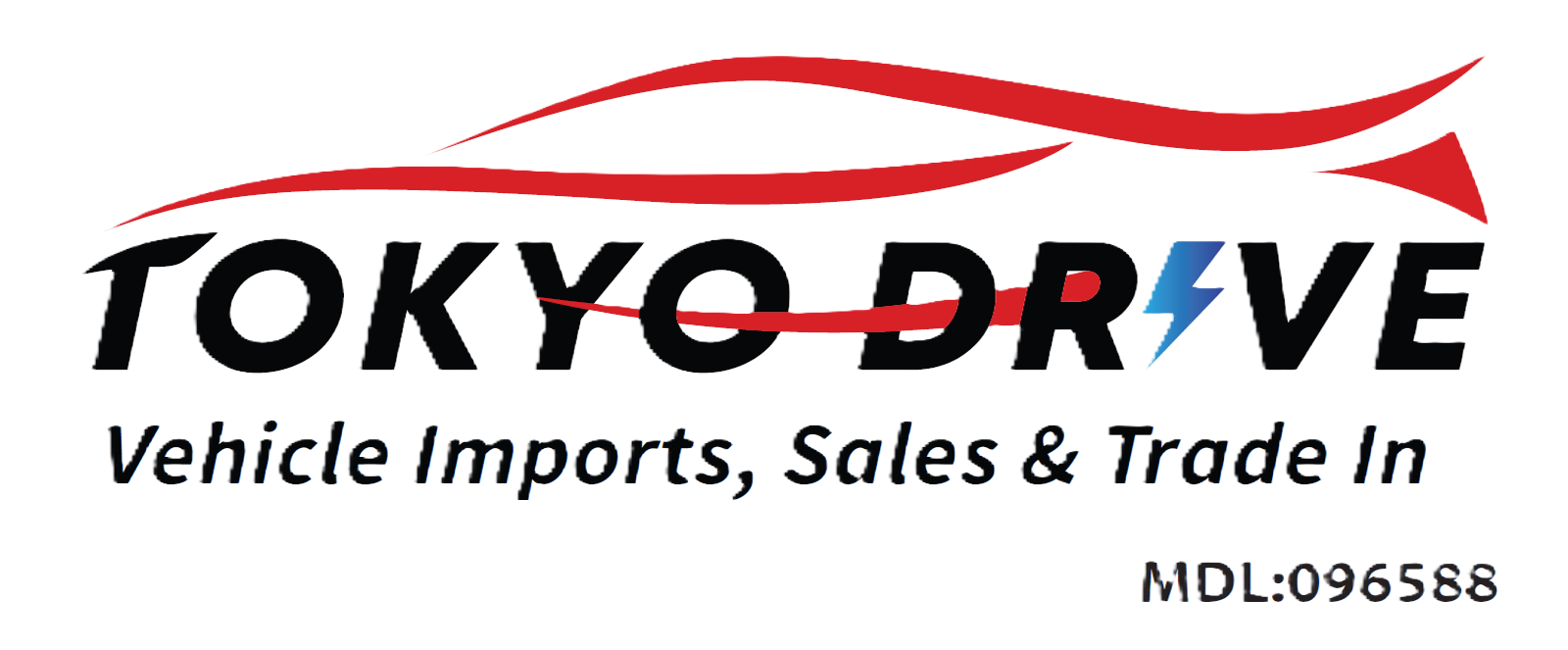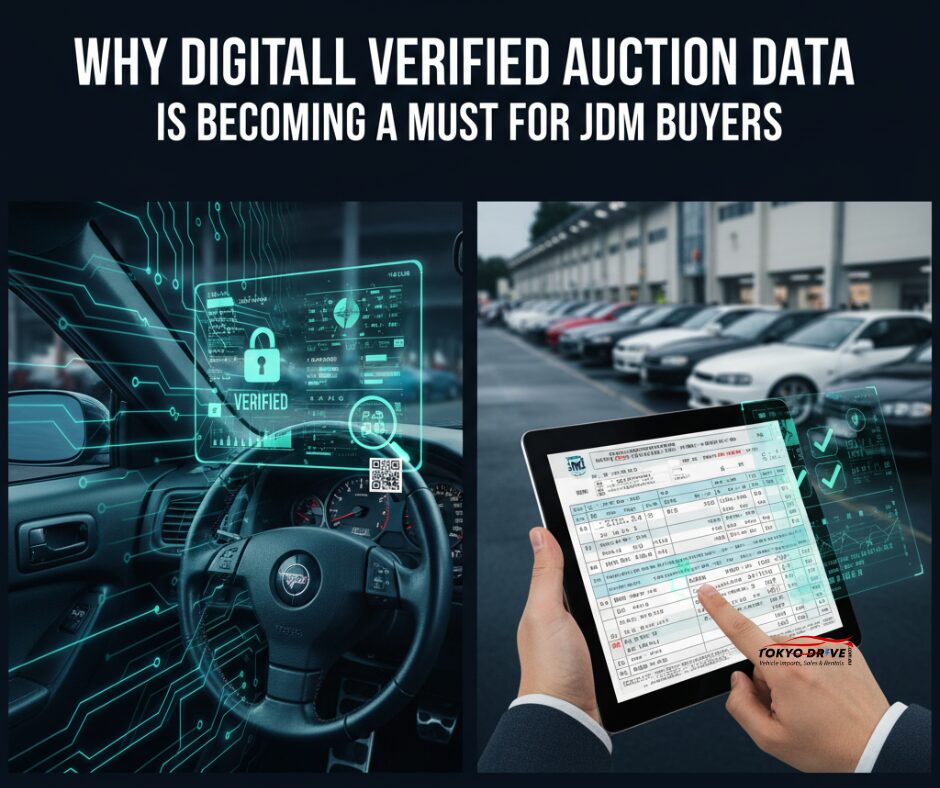Answer First:
In 2025, digitally verified auction data is no longer a luxury — it’s a necessity for JDM car buyers who want transparency, authenticity, and protection from fraud.
With the rise of Japan car auctions and global online bidding, verified digital records help ensure that the car you’re buying is the same one inspected, graded, and listed — not a manipulated or misrepresented version.
Let’s explore why verified auction data has become a must-have for serious Japanese car importers and enthusiasts worldwide.
1. What Is Digitally Verified Auction Data?
Digitally verified auction data refers to the authentic digital record of a car’s auction listing — including:
-
Auction sheet (condition report)
-
Chassis number & VIN verification
-
Photos taken by the auction house
-
Inspection results & mileage record
-
Digital timestamps and blockchain verification
These records are digitally signed or stored in secure databases (sometimes blockchain-backed), making it impossible for agents or third parties to alter them.
In short:
👉 It’s proof that your JDM car’s history, grade, and mileage are 100% authentic.
2. The Growing Problem: Fake or Manipulated Auction Sheets
For years, global JDM buyers have relied heavily on auction sheets to evaluate a car’s condition.
But as the market expanded, unscrupulous exporters and resellers started editing or recreating auction sheets to mislead buyers.
Common fraud cases include:
-
Mileage tampering before resale.
-
Hiding R-grade (accident-repaired) history.
-
Replacing real auction images with better ones.
-
Fake grading (showing 4.5 instead of 3).
Without digital verification, buyers risk paying thousands for cars that don’t match their true auction history.
3. Why JDM Buyers Are Demanding Verified Data in 2025
a. Transparency and Trust
Today’s buyers want proof, not promises.
Digitally verified auction data provides end-to-end visibility, showing exactly when and how the vehicle was inspected and graded.
b. Global Online Bidding
With platforms like USS Auto Auction, BE FORWARD, and Car From Japan, buyers often bid without seeing the car physically.
Verified digital data bridges this trust gap — giving buyers confidence that what’s listed is what’s shipped.
c. AI and Blockchain Integration
Auction houses and exporters are adopting AI-driven verification and blockchain records to create tamper-proof data trails.
These systems cross-check auction sheets, VIN numbers, and photo metadata for inconsistencies.
d. Legal Protection for Buyers
Verified data helps buyers dispute claims, file insurance, or verify export documentation in case of fraud.
In some countries, customs even require proof of authenticity before clearing imported vehicles.

4. How Digitally Verified Auction Data Works
Let’s simplify the process step by step:
Step 1: Auction House Data Creation
When a vehicle is listed in a Japan car auction (like USS, TAA, or CAA), all inspection details are entered into a central digital system.
Step 2: Data Encryption & Timestamping
The auction record — including photos, grade, mileage, and comments — is digitally timestamped and stored securely.
Some systems use blockchain to make these records immutable.
Step 3: Verification Access
Licensed exporters can share the official digital auction sheet directly from the auction’s API or verified portal.
Buyers can cross-check it via the auction’s verification tool.
Step 4: Exporter Validation
Trusted exporters attach the digital verification certificate or link to your purchase documents.
If you scan or access it online, you’ll see:
-
Real auction date and venue
-
Car’s frame number
-
Condition grade and remarks
-
Original inspection photos
5. Benefits of Verified Auction Data for Buyers
a. Zero Guesswork
You know exactly what you’re buying — no surprises about condition, repairs, or mileage.
b. Fraud Protection
Digitally verified data eliminates chances of fake auction sheets and mileage rollback scams.
c. Easy Resale
A verified auction record boosts resale value, proving authenticity to future buyers.
d. Customs & Compliance Ease
For importers in Australia, New Zealand, the UK, and the USA, verified auction data speeds up customs clearance by proving car origin and condition.
e. Confidence in Remote Bidding
Even if you’re bidding from another continent, verified data ensures the car’s identity and details are real.
6. Real-World Example: USS Auto Auction Verification
The USS Group, Japan’s largest auction network, now provides a digital verification tool where buyers can:
-
Enter the USS lot number or chassis code
-
Instantly view the official auction sheet
-
Confirm auction date, venue, grade, and comments
This data can’t be edited — meaning what you see is straight from the source, not from an intermediary PDF.
Other auction houses like TAA, CAA, and Honda Auto Auction are now adopting similar verification systems for global transparency.
7. The Role of Exporters and Agents
A legitimate Japan car auction agent should:
-
Provide direct access to verified auction listings
-
Never share “recreated” or “translated-only” sheets without source verification
-
Offer digital proof links or screenshots from the official auction platform
If an exporter avoids sharing the digital verification link, it’s a major red flag.

8. Verified Data and AI-Driven Analytics: The Future of Car Buying
Artificial intelligence is now playing a critical role in auction data validation:
-
AI systems compare auction sheet descriptions with image recognition from vehicle photos.
-
Machine learning detects inconsistencies (e.g., mileage doesn’t match inspection age).
-
Predictive models estimate true market value based on verified historical auction data.
This combination of AI + digital verification ensures global buyers can make data-backed purchasing decisions.
9. How to Verify Auction Data Yourself
Here’s a quick guide for any buyer:
-
Ask your exporter for the original auction house link (not a screenshot).
-
Check the lot number directly on the auction’s official site (e.g., USS, CAA).
-
Match the chassis/VIN with your invoice and Bill of Lading.
-
Inspect photo metadata (timestamps, backgrounds).
-
Use third-party verification tools like:
-
CarVX.jp
-
Japan-Partner verification portal
-
JDMVerify.com (for blockchain-backed checks)
-
10. The Future: Fully Digital, Traceable JDM Ecosystem
By 2025, Japan’s car auction industry is transitioning to a fully digital ecosystem:
-
Smart contracts will lock in transactions.
-
AI grading tools will remove human bias.
-
Digital twins of vehicles will link inspection, export, and import records.
For JDM enthusiasts, that means a future where you can trace your Skyline, Supra, or RX-7’s entire journey — from the auction floor in Tokyo to your garage in Sydney.
11. Conclusion: Verified Auction Data Is the New Standard
The days of trusting unverified PDFs or translated reports are over.
Today’s JDM buyers deserve accuracy, transparency, and digital proof — not assumptions.
By choosing digitally verified auction data, you ensure:
-
The car’s history is genuine.
-
The auction grade hasn’t been altered.
-
You’re paying for what’s real — not what’s fabricated.
In short:
👉 Digitally Verified Auction Data = Trust, Transparency, and True Value for every JDM buyer in 2025 and beyond.



